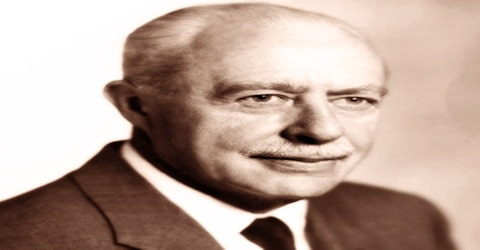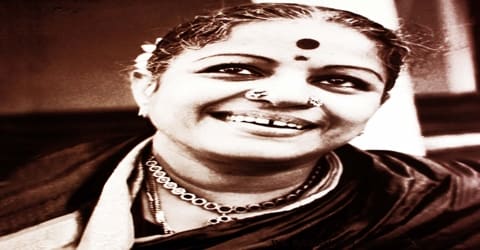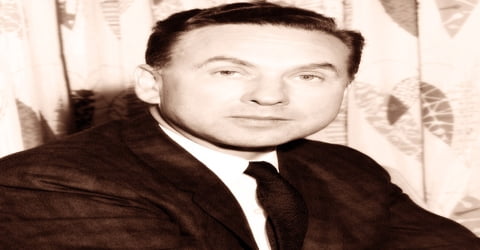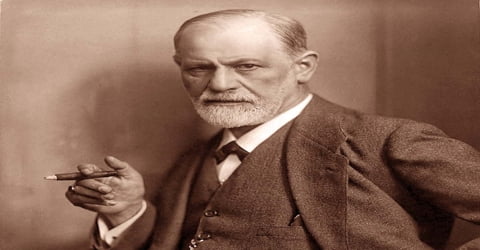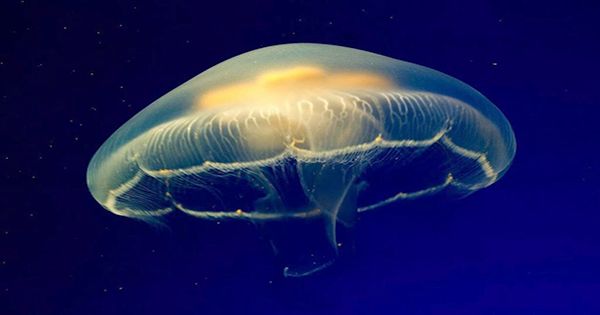Biography of Walter Houser Brattain
Walter Houser Brattain – American physicist.
Name: Walter Houser Brattain
Date of Birth: February 10, 1902
Place of Birth: Xiamen, Fujian, Qing Dynasty
Date of Death: October 13, 1987 (aged 85)
Place of Death: Seattle, Washington, United State
Occupation: Physicists
Father: Ross R. Brattain
Mother: Ottilie Houser Brattain
Spouse/Ex: Keren Gilmore (m. 1935 – died. 1957), Emma Jane (Kirsch) Miller (m. 1958)
Children: William G. Brattain
Early Life
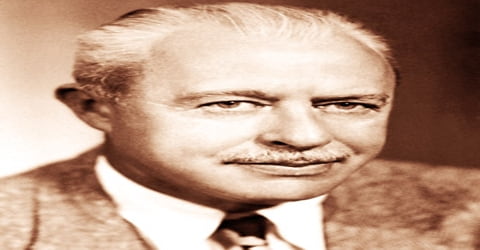
An American scientist who, along with John Bardeen and William B. Shockley, won the Nobel Prize for Physics in 1956 for his investigation of the properties of semiconductors materials of which transistors are made and for the development of the transistor, Walter Houser Brattain was born on February 10, 1902, in Amoy (now Xiamen), Fujian, Qing China, to American parents Ross R. Brattain and Ottilie Houser Brattain. The transistor replaced the bulkier vacuum tube for many uses and was the forerunner of microminiature electronic parts.
While Brattain and Bardeen were recognized for their invention of the point-contact transistor, Shockley was credited for inventing junction transistor. Brattain dedicated most of his research career in investigating surface states, especially the atomic composition of a material’s surface that generally differs from the atomic composition of its interior. He along with Bardeen worked on a project at the ‘Bell Laboratories’ to comprehend semiconductors in a better way so that these can be applied properly in amplifying signals. Investigations of the duo led to the path-breaking discovery of the first transistor in 1947. They shared credit with William Shockley, their supervisor who almost right away invented the junction transistor. In no time transistor became a replacement for bulky and expensive vacuum tubes leading to its widespread application in electronic devices. This breakthrough invention paved way for a virtual revolution by way of other developments in the field of electronics like fax machines, computers, satellites, and cell phones. Brattain served as visiting lecturer at ‘Harvard University’ and at ‘Whitman College’ and upon retirement from ‘Bell Laboratories’ he served as an adjunct professor at ‘Whitman College’. He also jointly received the ‘Stuart Ballantine Medal’ (1952) and the ‘John Scott Medal’ (1954) with Bardeen.
Childhood, Family and Educational Life
Walter H. Brattain, in full Walter Houser Brattain (/ˈbrætən/), was born on February 10, 1902, in Xiamen, Fujian, China to Ross R. Brattain and Ottilie Houser Brattain. His father was a teacher at the ‘Ting-Wen Institute’ in China while his mother was a talented mathematician. His sister was Mari Brattain and brother was R. Robert Brattain who became a physicist. Ottilie and baby Walter returned to the United States in 1903, followed by Ross. The family lived for several years in Spokane, Washington, then settled on a cattle ranch near Tonasket, Washington in 1911.
Brattain attended high school in Washington, spending one year at Queen Anne High School in Seattle, two years at Tonasket High School, and one year at Moran School for Boys on Bainbridge Island. Brattain then attended Whitman College in Walla Walla, Washington, where he studied with Benjamin H. Brown (physics) and Walter A. Bratton (mathematics). Brattain earned a bachelor’s degree from Whitman College in 1924, with a double major in physics and mathematics. Brattain and his classmates E. John Workman, Vladimir Rojansky and Walker Bleakney, who achieved great heights in their respective careers, became famous as “the four horsemen of physics”.
In 1926 Brattain obtained an MA degree from ‘University of Oregon’ in Eugene. In 1929 he completed his Ph.D. from ‘University of Minnesota’ submitting thesis on ‘Efficiency of Excitation by Electron Impact and Anomalous Scattering in Mercury Vapor’, prepared under the supervision of noted American physicist John Torrence Tate, Sr. Brattain learned about the new field of quantum mechanics under distinguished American physicist and mathematician John Hasbrouck Van Vleck in Michigan.
Personal Life
Walter Houser Brattain married twice. His first wife was chemist Keren Gilmore. They married in 1935 and had a son, William G. Brattain, in 1943. William became a puzzle designer.
After Keren died of cancer on April 10, 1957, Brattain married Emma Jane (Kirsch) Miller, a mother of three, in 1958. Brattain moved to Seattle, Washington, in the 1970s where he lived until his death.
Career and Works
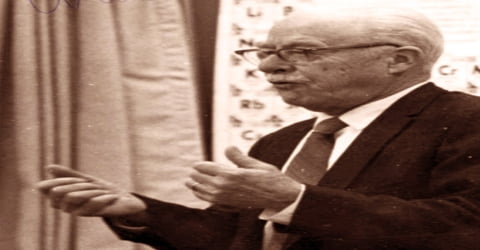
In 1927 Walter Houser Brattain joined ‘National Bureau of Standards’ in Washington, D.C., as a radio engineer and aided in developing piezoelectric frequency standards. He joined research and scientific development company, ‘Bell Telephone Laboratories’ (presently ‘Nokia Bell Labs’) as a research physicist in August 1929 and started working with Joseph A. Becker on the thermally induced flow of charge carriers in copper oxide rectifiers. Some of their experiments on thermal emission catered to the experimental confirmation of the Sommerfeld theory, developed principally by German theoretical physicist Arnold Sommerfeld.
Brattain examined rectification and photo-effects on semiconductor surfaces of silicon and cuprous oxide and invented photo-effect at the free surface of a semiconductor. During that period vacuum tubes had a widespread application in the telephone industry even though these lacked efficiency and reliability. Thus the ‘Bell Laboratories’ made an effort in developing an alternate technology.
At the time, the telephone industry was heavily dependent on the use of vacuum tubes to control electron flow and amplify current. Vacuum tubes were neither reliable nor efficient, and Bell Laboratories wanted to develop an alternative technology. As early as the 1930s Brattain worked with William B. Shockley on the idea of a semiconductor amplifier that used copper oxide, an early and unsuccessful attempt at creating a field effect transistor. Other researchers at Bell and elsewhere were also experimenting with semiconductors, using materials such as germanium and silicon, but the pre-war research effort was somewhat haphazard and lacked strong theoretical grounding.
While the Second World War was on, Brattain and Shockley became associated with ‘National Defense Research Committee’ and separately researched on magnetic detection of submarines at the ‘Columbia University’. Brattain’s team succeeded in developing magnetometers that were sensitive enough to discover irregularities in the magnetic field of the earth caused due to submarines. This work led him to patent a design for a magnetometer head in 1944.
In 1945, Bell Labs reorganized and created a group specifically to do fundamental research in solid state physics, relating to communications technologies. Creation of the sub-department was authorized by the vice-president for research, Mervin Kelly. An interdisciplinary group, it was co-led by Shockley and Stanley O. Morgan. The new group was soon joined by John Bardeen. Bardeen was a close friend of Brattain’s brother Robert, who had introduced John and Walter in the 1930s. They often played bridge and golf together. Bardeen was a quantum physicist, Brattain a gifted experimenter in materials science, and Shockley, the leader of their team, was an expert in solid-state physics.
Brattain and Bardeen thrived in developing amplification, though of small level, by including a gold metal point into the silicon and enclosing it with distilled water. By substituting germanium in place of silicon they succeeded in enhancing the amplification, although for currents of low frequency. Shockley, Brattain, and Bardeen finally displayed their first working transistor to their fellow scientists in Bell on December 23, 1947. Thereafter Brattain worked with another research team of the lab that included scientists like P. J. Boddy and C. G. B. Garrett.
On June 30, 1948, Bell Laboratories held a press conference to publicly announce their discovery. They also adopted an open policy in which new knowledge was freely shared with other institutions. By doing so, they avoided the classification of the work as a military secret and made possible widespread research and development of transistor technology. Bell Laboratories organized several symposia, open to university, industry and military participants, which were attended by hundreds of scientists in September 1951, April 1952, and 1956. Representatives from international as well as domestic companies attended. Shockley believed (and stated) that he should have received all the credit for the discovery of the transistor. He actively excluded Bardeen and Brattain from new areas of research, in particular, the junction transistor, which Shockley patented. Shockley’s theory of the junction transistor was an “impressive achievement”, pointing the way to future solid-state electronics, but it would be several years before its construction would become practically possible. Brattain transferred to another research group within Bell Laboratories, working with C. G. B. Garrett, and P. J. Boddy. He continued to study the surface properties of solids and the “transistor effect”, so as to better understand the various factors underlying semiconductor behavior. Describing it as “an intolerable situation”, Bardeen left Bell Laboratories in 1951 to go to the University of Illinois, where he eventually won a second Nobel Prize for his theory of superconductivity. Shockley left Bell Laboratories in 1953 and went on to form the Shockley Semiconductor Laboratory at Beckman Instruments.
In 1952 Brattain remained a visiting lecturer at ‘Harvard University. He was conferred honorary D. Sc by ‘Portland University’ (1952), ‘Union College’ (1955), ‘Whitman College’ (1955) and ‘The University of Minnesota’ (1957). He served as a visiting lecturer at ‘Whitman College’ in 1962 and 1963 and became its visiting professor in 1963.
After leaving Bell Laboratories in 1967, Brattain served as an adjunct professor at Whitman College, Walla Walla, Wash. (1967-72), then was designated overseer emeritus. He was granted a number of patents and wrote many articles on solid-state physics.
In 1976 Brattain retired from the college but continued to serve as its consultant. He was a member of many renowned institutes and committees including ‘National Academy of Sciences’, ‘American Academy of Arts and Sciences’, ‘Naval Research Advisory Committee’ and the ‘Franklin Institute’.
Brattain later collaborated with P. J. Boddy and P. N. Sawyer on several papers on electrochemical processes in living matter. He became interested in blood clotting after his son required heart surgery. He also collaborated with Whitman chemistry professor David Frasco, using phospholipid bilayers as a model to study the surface of living cells and their absorption processes.
Awards and Honor
Walter Houser Brattain was jointly awarded the ‘Nobel Prize in Physics’ in 1956 with John Bardeen and William Shockley by King Gustaf VI Adolf of Sweden.
Death and Legacy

Walter Houser Brattain died on October 13, 1987, in a nursing home in Seattle from Alzheimer’s Disease. He is buried in Pomeroy City Cemetery, Garfield County, Washington, U.S. A Y-shaped circuitry and schematics symbolizing transistor is engraved on his tombstone.
The Walter Brattain Scholarship program was initiated by ‘Whitman College’ in his honor. All applicants for admission are considered for the scholarship, which is potentially renewable for four years.
Information Source:
